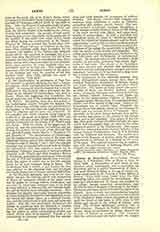

Camus de Pont-Carre, JEAN-PIERRE, French bishop, b. November 3, 1584, at Paris; d. there April 25, 1652. A Burgundian of good birth, he was ordained priest, immediately won a reputation for eloquence, and by a special dispensation of Paul V was made Bishop of Belley at the age of twenty-six, being consecrated by St. Francis of Sales, Bishop of Geneva: From that event (1609) dates the close friendship which ever united the two prelates. The episcopal administration of Camus was marked by an ardent, though somewhat inconsiderate, zeal. In 1614 he went as delegate of the clergy to the Etats-Generaux, and there stoutly defended the rights of the Church. Love of study and contemplation tempted him to resign his see, but, in deference to the counsels of St. Francis of Sales, Camus remained at his post until the death of that saint in 1629, when he left Belley and retired to the Abbey of Aulnay, near Caen. The coveted retirement, however, was of brief duration. Francois die Harlay, Archbishop of Rouen, being incapacitated by illness, claimed the services of Camus as auxiliary. This connection with the archiepiscopal see lasted until the resignation of de Harlay in 1651, when Camus retired to the Hospice des Incurables, at Paris, less to be a patient than to be a sympathizer with patients. Louis XIV pressed the Bishopric of Arras upon him, but Camus, having at length reluctantly accepted the charge, died before the arrival of the papal confirmation. His remains were laid to rest in the nave of the hospice chapel, where, until 1904, an epitaph told the tale of his disinterestedness and charity: Qui sibi pauper—Pauperibus dives—Inter pauperes—Vivere, mori et human voluit (Poor for himself, rich for the poor, he wished to live, die, and be buried among the poor). Richelieu said of Camus that his acrimony against the mendicant orders was the only flaw in his character. Owing, doubtless, to this well-known antipathy, verging on hatred, some strange charges have been made against him: Voltaire makes him the author of a vile book, “Apocalypse de Meliton”, which was really written by Claude Pitois, an apostate monk, in 1668. Sauvage (Realite du projet de Bourg-Fontaine) accuses him of joining the Jansenists in a plot against the Church, basing his accusation on the fact that, in the alleged plot, the work of defaming the religious orders had been assigned to one “P. C.” (Pierre Camus). Sainte-Beuve (Port-Royal, I, 241) probably comes nearer the truth when he describes Camus as naively eager for public notice, and led by this foible to consort with the Jansenists of Port-Royal, though he did not escape their ridicule. His literary activity was prodigious. Leclerc and Niceron enumerate over two hundred books written by him. His sermons and religious novels have been completely forgotten, in spite of the efforts of H. Rigault (preface to his edition of “Palombe”, 1853) and St. Marc-Girardin (Cours de litterature, IV) to rescue them from oblivion. Of his theological and controversial works, such as “Introduction it la theologie” (1645); “Du chef de l’eglise” (1630); “De la Primaute” (1630); “Enseignements catechetiques (1642); “Correspondance de l’ecriture sacree et de la sainte eglise” (1683); “Antitheses protestantes” (1638), only one survives, “L’avoisinement des protestants vers l’eglise romaine” (Paris, 1640, reedited by Richard Simon (1703), and translated into Latin by Zaccaria, in Migne, “Theol. Cursus compl.”, V. On the other hand, his ascetical books, e.g. “L’usage de la penitence et communion” (1644), “Du rare ou frequent usage de l’Eucharistie” (1644),” Pratique de la communion frequente” (1644), have had a great influence. One of them, “L’esprit de Saint Francois de Sales” (Paris, 1641), a minute and loving portrayal of the saint, has gone through many editions (Collot, Paris, 1727; Depery, Paris, 1840), and two English translations of it have appeared, that of Sidney Lear (London, s. d.) and O’Shea (New York, 1869). To the same class of writings, at least in the mind of Camus, belong several pamphlets against the mendicants: “Le voyageur inconnu” (1630); “Le directeur spirituel” (1631); “L’antimoine” (1632); “Pauvrete evangelique” (1634); “Rabat-joie du triomphe monacal” (1634), and so on sometimes quoted under the general head, “Des moines”. Of these it may be said that they only detract from the otherwise good fame of their author. The Spanish translation by Cabillas of a treatise by Camus on the love of God has been on the Spanish Index since 1747.
J. F. SOLLIER

